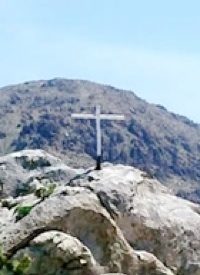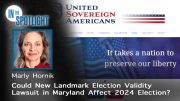
On Wednesday, April 28, in a surprising 5-4 ruling by the United States Supreme Court, justices ruled that the 1st Amendment “accommodates” for religious displays on public land. In reference to the display of a cross in the Mojave Desert honoring the lives of fallen soldiers, a divided court ruled that the Constitution “does not require the eradication of all religious symbols in the public realm.”
Several years ago, California judges ruled that the National Park Service officials were required to remove the cross from the Mojave National Preserve, though it stood on that land since 1934. Despite the fact that the cross pays homage to the soldiers who perished during World War I, the California judges claimed that the presence of the cross was an indication of government endorsement of religion.
Speaking for the majority opinion, Supreme Court Justice Anthony M. Kennedy explained that the 1st Amendment allows for a “middle-ground policy of accommodation” regarding religious displays on public land, and not necessarily of strict separation of church and state.
Kennedy seems to hold a far better understanding of the 1st Amendment than many. Once again, the decision of the California judges is a clear indication of the courts’ inability to properly read the Constitution. The “Establishment Clause” of the First Amendment simply reads: “Congress shall make no law respecting an establishment of religion, or prohibiting the free exercise thereof.” Nowhere in the Constitution do the words “separation of Church and State” appear.
Kennedy writes, “A Latin cross is not merely a reaffirmation of Christian beliefs. Here, a Latin cross in the desert evokes far more than religion. It evokes thousands of small crosses in foreign fields marking the graves of Americans who fell in battles, battles whose tragedies are compounded if the fallen are forgotten.”
Despite this reasoning, Justice John Paul Stevens asserted that the government must “avoid endorsement of a particular religious view.” Not surprisingly, Justice Stevens was joined by Justices Ruth Bader Ginsburg, Stephen Breyer, and Sonia Sotomayor.
The Mojave cross is yet another case within the last three decades involving government displays of religious symbols that has sparked fierce debate. According to the Pew Forum of Religion and Public Life, the first of these cases appeared in 1980 when the Supreme Court reviewed a Kentucky law that required public schools to display the Ten Commandments in classrooms. The court ruled that the Kentucky law was in violation of the First Amendment’s Establishment Clause. This ruling set a precedent for similar misinterpretations of this clause by various courts.
Perhaps one of the most famous of these cases was in 2003, two years after Chief Justice Roy Moore of Alabama installed a monument to the Ten Commandments in a state judicial building. A federal judge ordered him to remove the monument in Glassroth v Moore, and when Moore refused to comply, he was ultimately removed from office.
Regardless of the courts’ misreading of the First Amendment and the explosive nature of these debates both in and out of court, surveys continuously indicate that the general public overwhelmingly supports the presence of religious symbols on public properties.
In a 2005 poll conducted by the Pew Research Center, 83 percent of Americans indicated that displays of Christmas symbols should be permitted on government property. Another Pew Research Center poll within the same year showed 74 percent of Americans believe it is appropriate to display the Ten Commandments in government buildings.
As long as “civil rights” groups like the American Civil Liberties Union and atheist groups like the United Coalition of Reason are in existence, Christians can expect to remain in the defensive position. However, when the Supreme Court surprises America with sound decisions such as these, it offers American Christians (and devout adherents of other faiths, as well) a glimpse of hope that perhaps all is not lost.
Photo: AP Images




